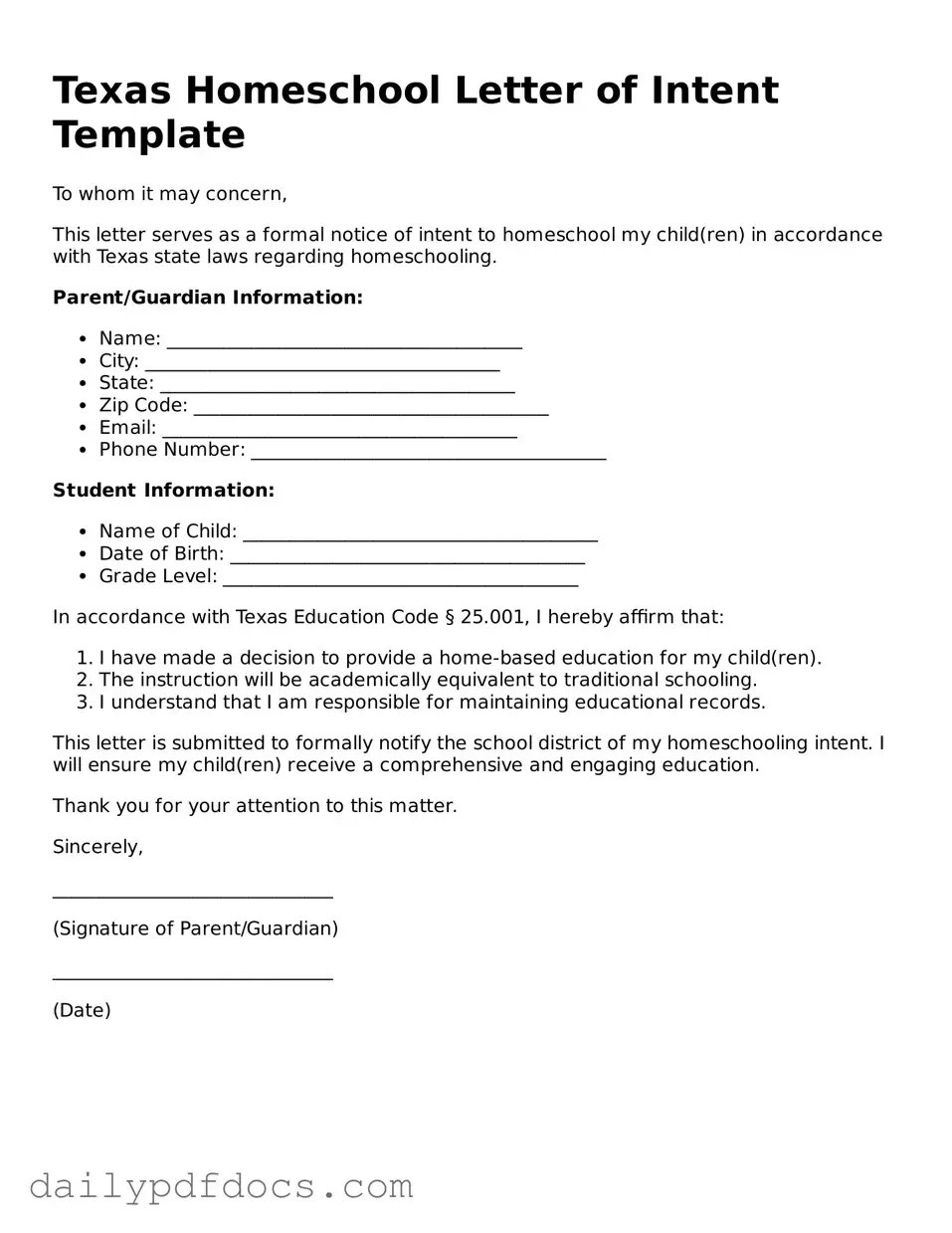What is the Texas Homeschool Letter of Intent?
The Texas Homeschool Letter of Intent is a formal notification that parents or guardians must submit to the local school district when they decide to homeschool their children. This letter serves as an official declaration of your intent to provide a home-based education, ensuring that you comply with Texas laws regarding homeschooling.
Who needs to submit a Letter of Intent?
Any parent or guardian who wishes to homeschool their child in Texas must submit a Letter of Intent. This requirement applies to children who are of compulsory school age, which is generally between the ages of 6 and 19. If you are removing your child from a public or private school to begin homeschooling, it is crucial to file this letter.
When should the Letter of Intent be submitted?
The Letter of Intent should be submitted as soon as you decide to homeschool your child. While there is no specific deadline, it is advisable to file it before the school year begins or as soon as you withdraw your child from their current school. This helps avoid any potential misunderstandings with the school district.
What information is required in the Letter of Intent?
Your Letter of Intent should include essential details such as the name of the child, their date of birth, and the address where the homeschooling will take place. Additionally, you may want to include your name and contact information, although this is not always mandatory.
Is there a specific format for the Letter of Intent?
There is no official template for the Letter of Intent in Texas, but it should be a clear and concise document. You can write it in a simple letter format, stating your intent to homeschool and including the necessary information. Make sure to keep a copy for your records.
Do I need to notify the school district every year?
Once you submit the Letter of Intent, you do not need to file it annually. However, if you decide to change your homeschooling approach, switch to a different school district, or if your child reaches a new educational level, it may be wise to notify the school district again.
What happens if I don’t submit a Letter of Intent?
If you fail to submit a Letter of Intent, your child may be considered truant, which can lead to legal consequences. School districts have the authority to investigate and enforce attendance laws. To avoid complications, it is best to ensure that you file the letter promptly.
Can I withdraw my child from public school after submitting the Letter of Intent?
Yes, you can withdraw your child from public school after submitting the Letter of Intent. However, it is recommended to officially inform the school of your decision to withdraw, as this helps maintain clear communication and avoid any potential issues regarding truancy.
Where should I send the Letter of Intent?
The Letter of Intent should be sent to the school district in which you reside. You can typically find the contact information for your local school district on their official website. Sending the letter via certified mail can provide you with proof of submission, should it be needed in the future.
